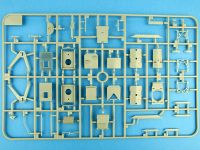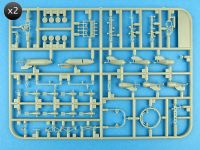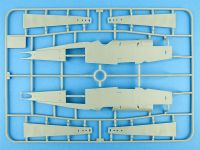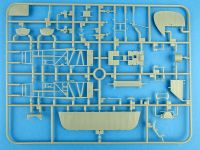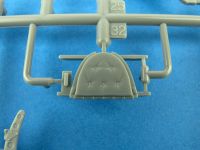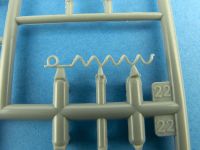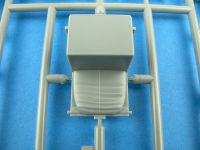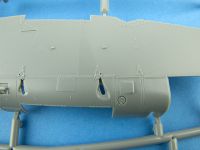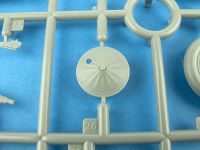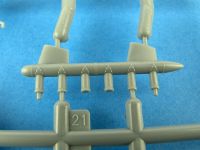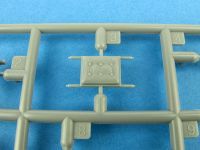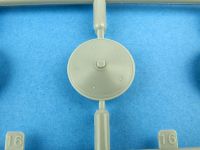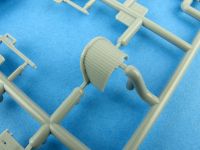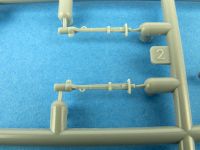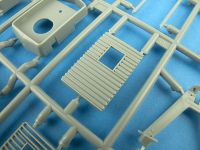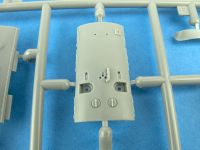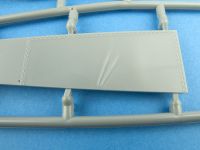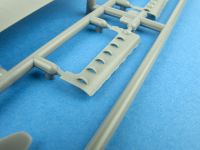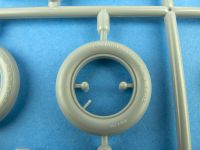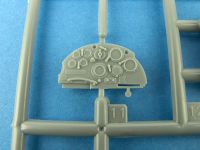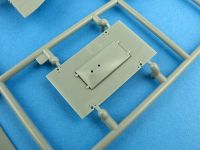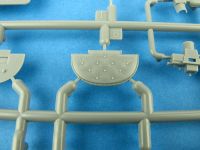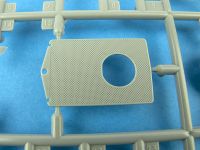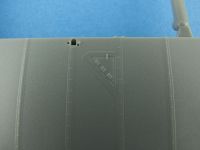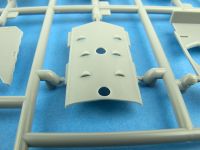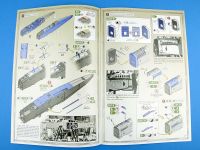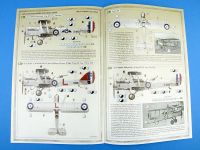Wingnut Wings | #32061: 1/32 DH.9a 'Ninak' (Post War)
Reviewed by Kevin Futter
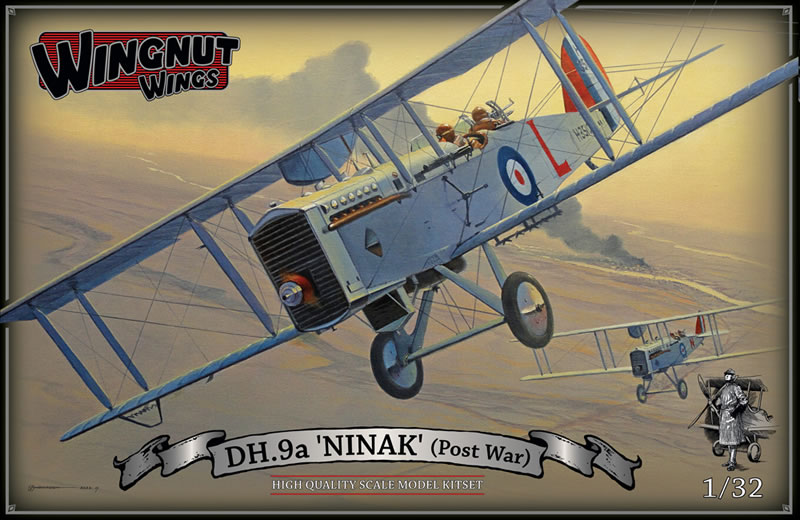
New Zealand firm Wingnut Wings continues its prolific release schedule of 1/32 WW1 aircraft kits with a post-war version of the original D.H.9a kit. Quoting from the company's product page:
Released on 27 November 2015 - High quality Cartograf decals for 5 post First World War aircraft - 348 high quality injection moulded plastic parts - 42 all new “Post War” plastic parts including undercarriage, instrument board, wheels (including spare), auxiliary petrol tank, auxiliary (tropical) radiator, leading edge wing slats and Polikarpov R-1 synchronizing gear -88 updated armament parts (from 32035) including 230lb HE bombs and improved Cooper bomb carriers - Highly detailed 400hp Liberty V12 engine - 30 photo-etched metal detail parts – Fine in scale rib tape detail – Full rigging diagrams.
According to the same page, the post-war versions differed from earlier versions like so:
Post war developments (as provided in this model) included improved undercarriage, an auxiliary radiator, additional gravity petrol tank and leading edge wing slats.
The box this kit comes in is positively bursting with sprues, with no fewer than eleven crammed into its modest confines. The full contents breakdown is as follows:
- 11 grey plastic sprues;
- 1 clear plastic sprue;
- 1 small photo-etched fret;
- 1 large decal sheet;
- 1 instruction booklet.
The Plastic Parts
There are 11 sprues moulded in the familiar mid-grey plastic.
Note that sprues D and R are duplicated in this kit.
The level and crispness of detail is well up to the usual standard from Wingnut Wings, which is among the best in the business. There's no sign of flash or moulding flaws anywhere, and no ejector pin marks in obvious or awkward places.
Check out the amazing detail in the close-up photos below:
As you can see, the level and finesse of the moulded-in details is exquisite, including everything from subtly rendered padding and ribbing effects, to crisp lettering on the tyres, and petite, in-scale surface detailing. Very impressive indeed.
The kit comes with two slightly different sets of fuselage side inserts for early and late version of the aircraft, and thoughtfully, Wingnut Wings has made it impossible to mix them up by labelling the underside of each part:
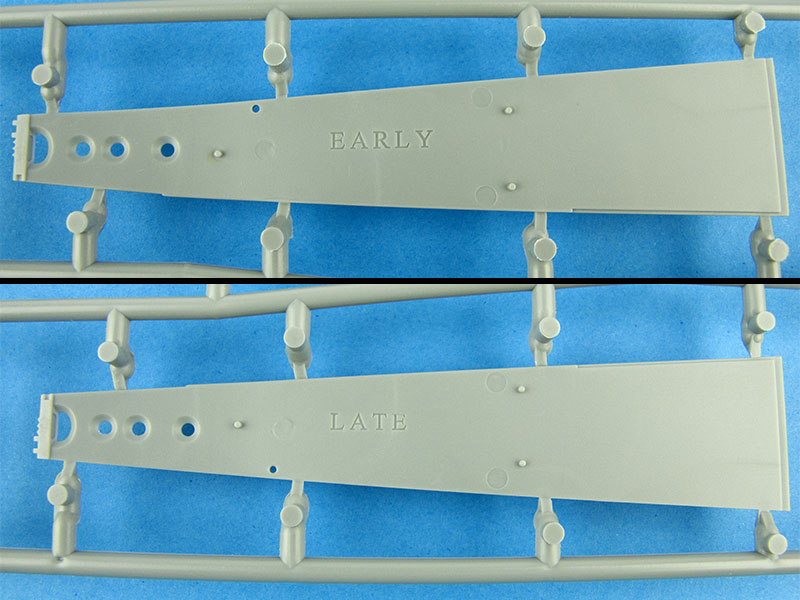
While examining these close-up photos, it suddenly occurred to me that there's one element to Wingnut Wings kits that typifies the company's attention to detail and thoughtful approach to kit design, but also something that I'm sure we all take for granted. I'm referring to the large, clearly-moulded part number tabs. This is a small, almost trivial detail, and yet I've battled kits from other manufacturers where these same tabs were so small, and their moulded-on numbers so faintly-moulded, that I could barely use them to identify parts. A small detail, certainly, but my fading eyesight appreciates it!
The Clear Parts
The clear parts are furnished on one small sprue:
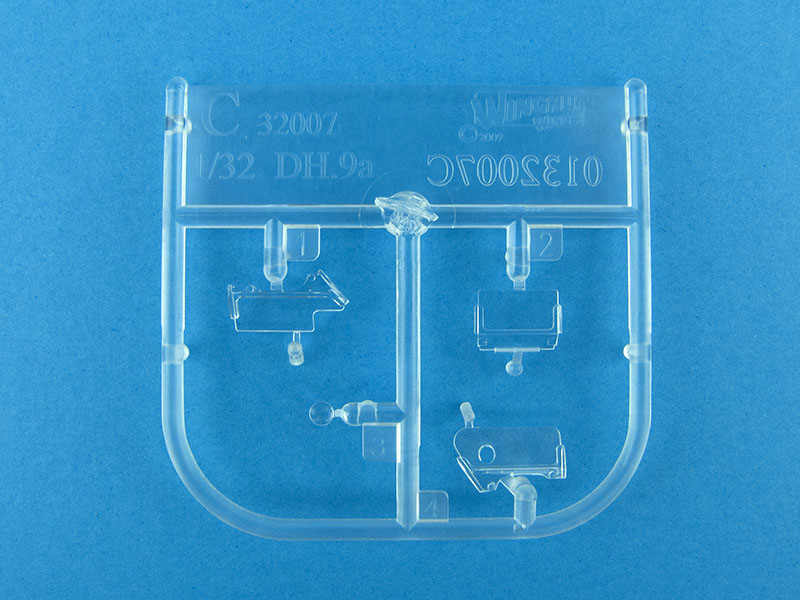
As is typical for aircraft of the era, there's really not much in the way of glassware to speak of.
Photo-etched Fret
Housed inside the plastic bag that contains the decals is a small photo-etched fret:

This consists mainly of seat belts and assorted internal details, plus some lacing details for the fuselage sides.
Decals and Markings
The decals are contained on a single large sheet:
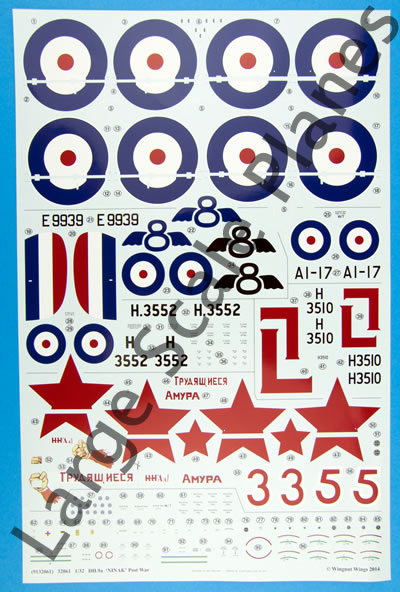
These are exquisitely printed by Cartograf in Italy, and exhibit perfect registration, finely-printed details and no obvious signs of translucence.
The sheet features markings for five aircraft:
- DH.9a E9939, Vulcan built, 8 Sqn RAF, Iraq, mid 1920s
- DH.9a H3510 'L', Westland built, AC Jones-Williams & Benson, B flight, 8 Sqn RAF, Iraq, 1923 to 1924
- DH.9a H3552, Vulcan built, 39 Sqn RAF, UK, June-July 1923
- DH.9a A1-17, Berwick built, E Flight, 1 FTS RAAF, Australia, 1922
- Polikarpov R-1 'AMYPA', 19th Special Aviation Group, USSR, 1929
Instruction Booklet
The instruction booklets supplied in Wingnut Wings kits have become legendary, and with good reason. The production values are equivalent to a glossy magazine, and to refer to them as mere instruction booklets does them a grave disservice.
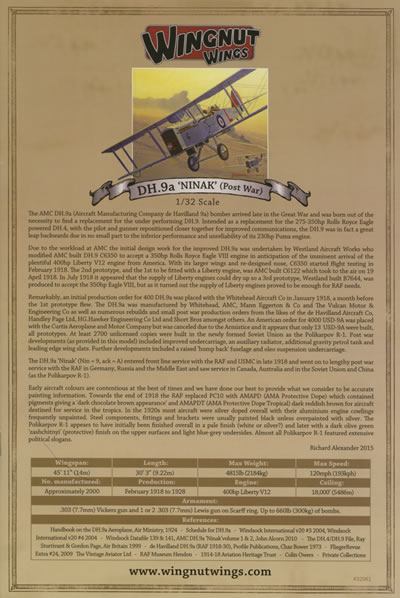
The cover features a potted history of the type, and a specifications table at the bottom. This material is also available on the Wingnut Wings webpage for the kit.
The content features colourful and highly-detailed annotated assembly drawings, complemented by captioned reference photographs and painting instructions.
Conclusion
This is another superb release from Wingnut Wings, and represents everything we've come to expect from the company's kits: exceptional moulding quality, excellent detail, superb decals and industry-leading documentation. What more could you ask for? Highly recommended.
Thanks to Wingnut Wings for the review sample.
© Kevin Futter 2016
This review was published on Sunday, January 24 2016; Last modified on Thursday, November 23 2017

